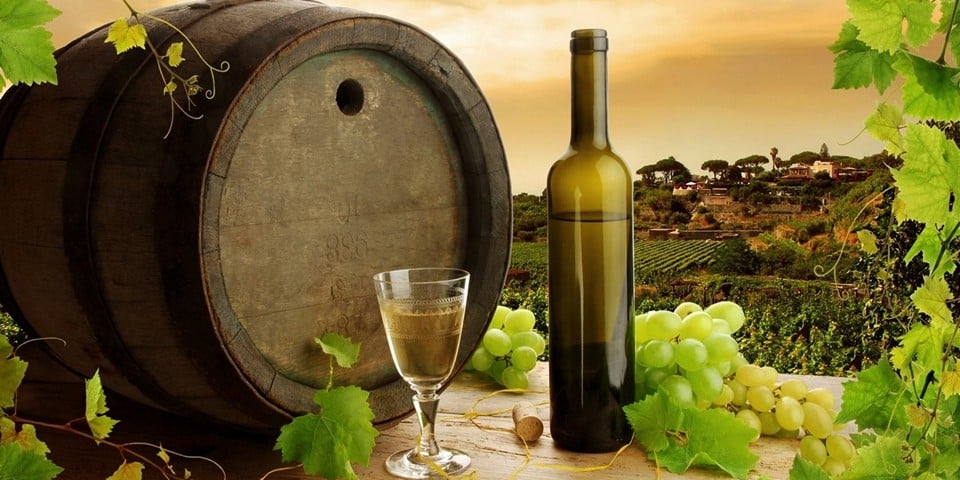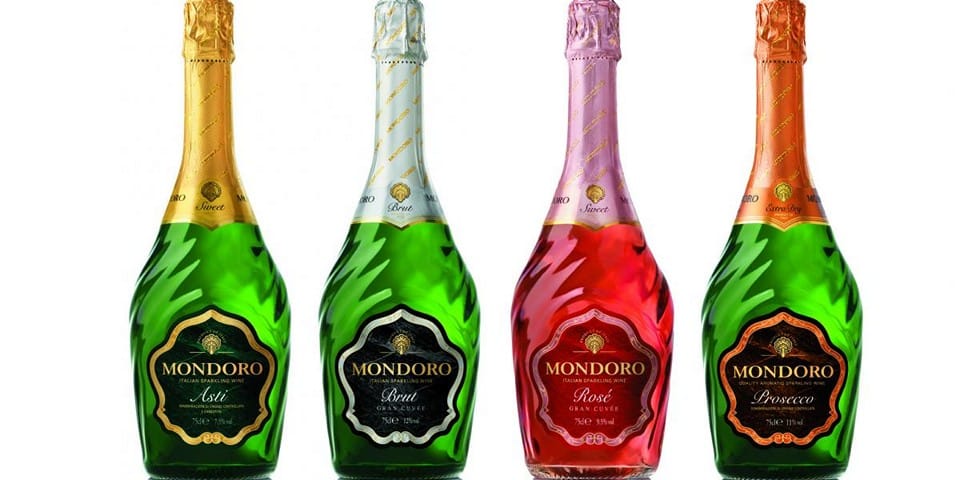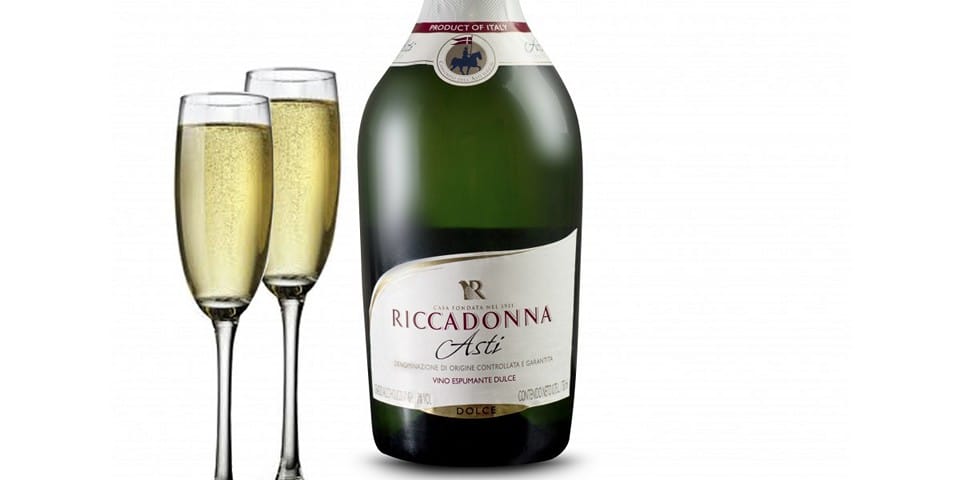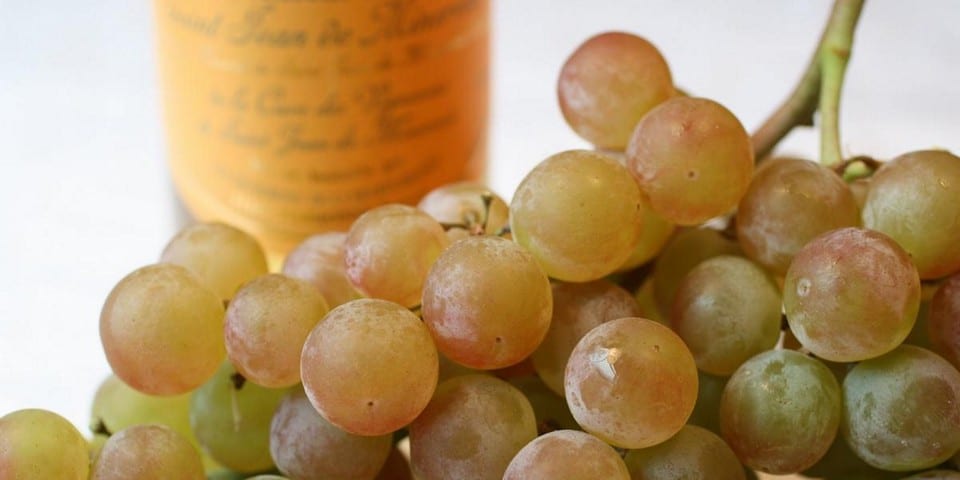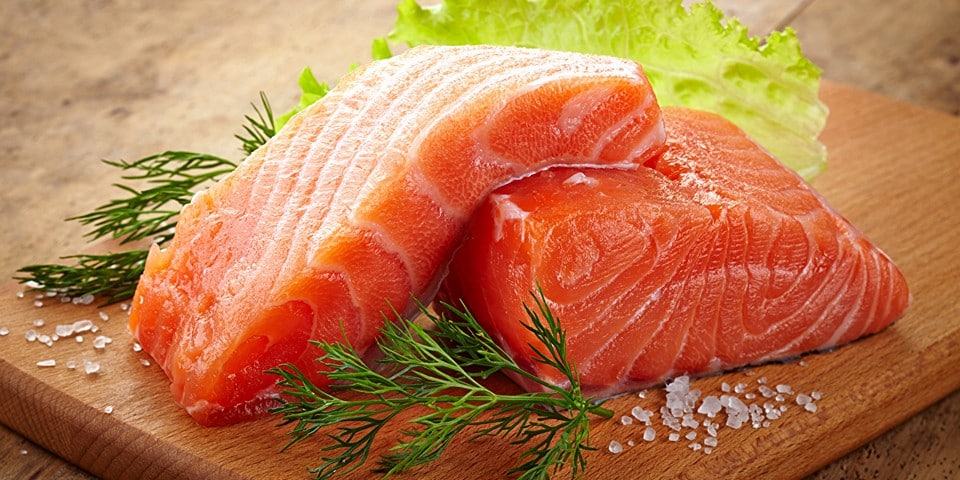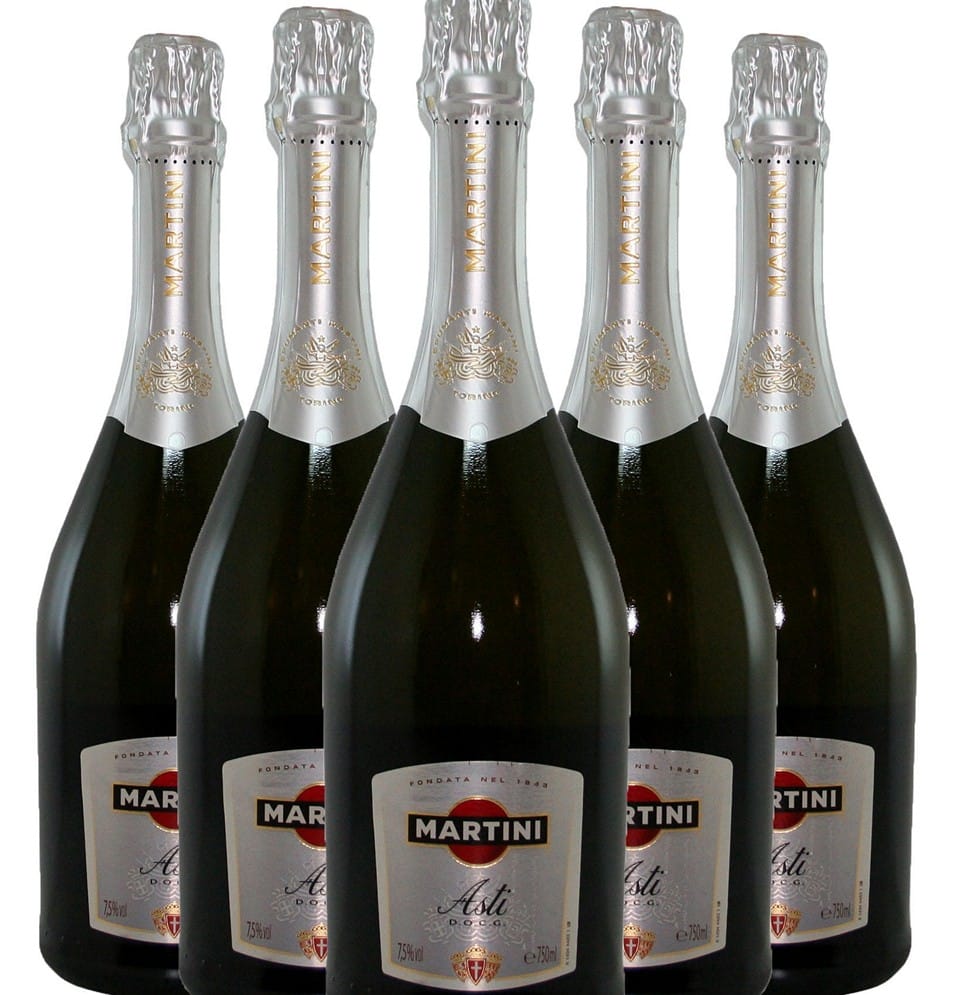With a high probability, it can be said that champagne accompanies all New Year’s tables around the world. However, sparkling wines from the French region of Champagne are less common than Italian sparkling wines. One of the brightest representatives of Italy’s effervescent alcohol community is Asti Champagne. Even more widely popular is Martini Asti. So, what makes this beverage unique? Let’s find out.
Page Contents
History of Martini Asti
Despite the fact that the Moscato Bianco grape variety is one of the oldest in Italy, the history of Asti Champagne is not as grand.
Since the 14th century, sweet wine made from white grapes gained high appreciation in the eastern part of the Mediterranean. It reached Italy through Venice. In the republic, the beverage was called “Greek wine.”
Giovan Battista Croce, a jeweler of Duke Carlo Emanuele I of Savoy, moved to Piedmont in the late 16th century. He ventured into winemaking and is rightfully considered the founder of the industry in the region. His experiments led to the creation of a sweet, aromatic white wine called Moscato d’Asti.
One of the vineyard owners replicated Croce’s experiments and described them in a winemaking book in 1606. Some techniques from this guide are still used today, such as thorough clarification (removal of pectins and mucilaginous substances) and the use of cold to stop fermentation.
In 1865, Carlo Gancia applied French champagne-making techniques to the wines of his company in the town of Canelli. Initially, the experiment was carried out with red wines, and later extended to white muscat. At the time, the resulting product was called “Moscato Champagne.” Today, it is known as Asti sparkling wine.
His success was remarkable. Many companies started producing the beloved wine. Among the first was the famous winery Martini & Rossi in Montechiaro d’Asti.
In the 20th century, Federico Martinotti improved and patented the method of producing sparkling wines. Then Alfredo Marone enhanced the pressure filtration system, giving birth to the perfect technology for producing Asti Champagne. Large volumes of the beverage were exported under the name Asti Spumante.
On December 17, 1932, the owners of major wineries convened the Consortium for the supervision of sparkling wine production. In 1993, Asti wine received the DOCG (Denominazione di Origine Controllata e Garantita) designation, emphasizing its value and quality.
Popular Brands
In the Asti wine market, 15 major wineries in Piedmont stand out. They all produce a wide range of grape-based beverages with various names. Approximately 8 out of 10 bottles of Asti Champagne are produced by these 15 companies. We will now present you with the top ten Italian leaders in the sparkling wine industry:
- Martini & Rossi Asti – Champagne from the eponymous company. It has a sweet taste with hints of apple, honey, citrus, and peaches. The color is light straw. Alcohol content is 7.5%.
- Mondoro Asti – Exquisite champagne that has received numerous international awards. The sweet taste is complemented by aromas of pineapple, peach, pear, and floral-honey notes. The color is straw-golden. Alcohol content is 7.5%.
- Tosti Asti – Sparkling wine from the Tosti company, which has a long history. It has a sweet, balanced taste with hints of pear and wisteria aroma. The color is light straw with golden highlights. Alcohol content is 7.5%.
- Cinzano Asti – Delightful champagne gaining popularity once again from the Cinzano company. It has a delicate taste with subtle hints of honey and aromatic herbs, accompanied by the fragrance of blooming acacia, sage, vanilla, and melon. The color is pale golden. Alcohol content is 7%.
- Gancia Spumante Asti – Champagne made from white muscat grapes grown in the town of Canelli. It has a vibrant taste with notes of fruits, sage, and honey. The color is golden straw. Alcohol content is 7.5%.
- Fontanafredda Asti – Excellent champagne named Galarej from the Fontanafredda company. It has a rich taste with a long strawberry aftertaste. It is characterized by notes of hawthorn, ripe fruits, and rosemary. The color is straw with a slight greenish hue. Alcohol content is 7%.
- Riccadonna Asti – A full-bodied sparkling drink with a fresh, slightly sweet taste. It has fruity-floral notes and a pale straw color. Alcohol content is 7%.
- Zonin Asti – Sweet sparkling wine from the Zonin company, which has wineries not only in Italy but also in the United States. It has a pleasantly sweet taste with the typical aroma of white muscat. The color is straw with sparkling golden tones. Alcohol content is 7.5%.
- Santero Asti – Champagne from the Santero company, which specializes in producing not only sparkling wines but also classic wines. It has a fresh taste with hints of apples and spices. The color is straw-yellow. Alcohol content is 7.5%.
- Vallebelbo San Maurizio Asti – Sparkling wine that begins its life in vineyards near the town of Santo Stefano Belbo. It has a balanced sweet taste with a delicate aftertaste. The color is light golden. Alcohol content is 7.5%.
It is worth noting that all the mentioned brands produce Asti sparkling wine, which belongs to the DOCG category. Please note that Asti champagne and white Moscato d’Asti wine are different beverages. The latter has a lower alcohol content (4.5-5%) and is slightly sparkling. Therefore, the bottles are sealed with a regular cork instead of the special system used for champagne.
- Also, read about the Martini brand.
Production Cycle of Martini Asti
The production technology of Asti sparkling wine is practically the same in all companies that produce wines in the DOCG category. The production of such products is strictly regulated. Martini Asti is an excellent example of the highest quality. Today, the process of obtaining Martini Asti is the result of the winemaking traditions of Piedmont and the latest research in this field. Let’s take a look at the journey of sparkling wine from vineyard to glass.
Grapevine
Asti sparkling wine is made from the “White Muscat” grape variety. The characteristics of the grapevine are enhanced depending on climatic factors and soil properties. The production area is mainly located in the province of Asti and partially in Cuneo and Alessandria. The vine density should be no less than 4,000 vines per hectare, and the grape yield should be more than 10 tons per hectare.
Valuable aromatic substances accumulate in the last weeks before the harvest and reach their maximum level in the first days of September. During this period, the grapes are harvested. All operations are carried out manually to preserve the integrity of the berries and transfer their aroma to the wine untouched.
Obtaining Must
White Muscat grapes are immediately sent to the pressing area after harvest, where they are transformed into must in large tanks. The raw material, after filtration to remove unwanted impurities, is pressed using a gentle method called “soffice.” The must obtained in this way is cooled to low temperatures (slightly above zero) to avoid unwanted fermentation.
Fermentation
The next stage in the life cycle of Asti sparkling wine is fermentation. The cooled must is brought to a temperature of approximately 20 degrees Celsius and yeast is added. When the alcohol content reaches 5.5%, the wine enters the stage of fermentation or secondary fermentation.
The future sparkling wine ferments in autoclaves, closed vessels under pressure. In these vessels, carbon dioxide gas (a byproduct of the process) is captured and dissolved in the wine. It is this gas that is the source of the bubbles in the wine. This method is called the Martinotti method, named after its creator. Although outside of Italy, it is referred to as the “Asti method.”
Filling
The fermentation of Asti Champagne is halted through cooling when the alcohol content reaches 7-9%, and the residual sugar is at 3-5%. After filtration to remove the yeast, it is bottled under conditions of absolute microbiological sterility. Martinі Asti DOCG, produced using this technique, preserves all the distinctive aromas of the “White Muscat” grapes, enriching it with a rich flavor and the brightness of sweet sparkling wine.
Differences from French Champagne
Like most people, in our article, we refer to the sparkling wine from Asti as “Champagne,” although it is not entirely accurate. The term “Champagne” can only be used for wines from the French region of Champagne. Here are the differences between these sparkling beverages:
- Grape variety: Champagne uses Chardonnay or Pinot Noir grapes, while Asti wine is made from White Muscat grapes.
- Production method: Both types are made using the secondary fermentation method. However, Champagne undergoes secondary fermentation directly in bottles, while Asti sparkling wine is produced in closed autoclaves.
- Taste: Asti falls into the category of sweet wines, whereas Champagne distinguishes itself with higher acidity and leans more towards dry wines.
- Cost: Compared to authentic Champagne, Asti is a relatively affordable option for a celebratory alcoholic drink. However, its immense popularity has led to a higher price than other sparkling wines from different countries.
It is said that sparkling wine is not Champagne, yet Champagne is a sparkling wine. The choice of the most suitable drink for you is entirely in your hands.
What to Pair With and How to Use
Martini Asti is often consumed when it is very young, as the wine quickly loses its freshness after 2 years. Its floral notes become heavier, and the typical fruity aroma, characteristic of this Champagne, almost disappears.
Although Asti falls into the category of sweet beverages, it has sufficient acidity. It is often paired with salads, spicy Asian dishes, pastries, desserts, sweet fruits, and nuts. Champagne should be served chilled at 6-8 degrees Celsius (42-46 degrees Fahrenheit).
You might be surprised, but sparkling wine can be enjoyed not only on its own. Many world-renowned chefs use it to create delicious dishes. It can be used to marinate meat, cook fruits, and dress salads. There are even recipes for risotto with Champagne.
Allow us to share with you a recipe for an amazing fish dish.
Trout Marinated in Asti Martini
To prepare this unusual dish for 6-8 people, you will need:
- 2.6 lbs (1.2 kg) trout fillets
- 4.2 oz (120 g) olive oil
- 2 carrots
- 4 shallots
- 1 medium onion
- 8 cloves of garlic
- 2 sprigs of sage
- 3 bay leaves
- 5.3 oz (150 g) wine vinegar
- 12.3 oz (350 g) Asti Martini
- 2.5 oz (70 g) raisins
- 3.5 oz (100 g) toasted pine nuts
- Salt, pepper, and chopped herbs to taste
Season the trout fillets with salt, pepper, and fresh herbs. Roll them into small rolls and wrap them tightly in baking paper. Steam the fish for 20 minutes, then let it cool and refrigerate for several hours.
Meanwhile, prepare the marinade: lightly sauté the sliced shallots, carrots, onion, garlic, sage, and whole bay leaves in olive oil. Reduce the heat to a minimum, pour in the vinegar and Asti Martini. Add the raisins and pine nuts. Unwrap the trout from the paper and cut it into small pieces. Place them in a suitable container, pour the marinade over them, and refrigerate for at least 24 hours.
Remove the dish from the refrigerator in advance before serving to allow it to reach room temperature. Although this recipe is not particularly cheap, its uniqueness and amazing flavor will be the highlight of your festive table.
Price of Martini Asti
When you arrive in Italy, make sure to buy yourself some Asti Martini to celebrate your long-awaited vacation. For example, the price in a typical supermarket in Rome does not exceed 6 euros for a 750 ml bottle.
Now we have told you everything you need to know about Italian sparkling wine Asti. Live dynamically, love wisely, travel independently, and remember, “Happiness lies not in the bubbles, but in their quantity!”
Interesting Facts
- Martini Asti, a renowned Italian sparkling wine, was first created in 1863 by the Martini family in Piedmont, Italy, where it continues to be produced today.
- The wine is made using 100% Moscato Bianco grapes, carefully harvested and selected to achieve its signature sweetness and aromatic profile.
- Martini Asti is celebrated for its low alcohol content, typically around 7-9% ABV (alcohol by volume), making it a delightful choice for those who prefer lighter beverages.
- Its effervescent character is achieved through the Charmat method, where secondary fermentation occurs in stainless steel tanks, preserving the wine’s fresh and fruity flavors.
- The wine’s distinctive taste profile includes notes of ripe peaches, orange blossoms, and a hint of honey, creating a harmonious and delightful sensory experience.
- Martini Asti is best served chilled in flute glasses to highlight its sparkling effervescence and to enjoy its aromatic bouquet fully.
- Renowned for its quality and popularity, Martini Asti has earned DOCG status, the highest classification for Italian wines, ensuring its authenticity and adherence to strict production standards.
 Italy for me From Italy with love
Italy for me From Italy with love



